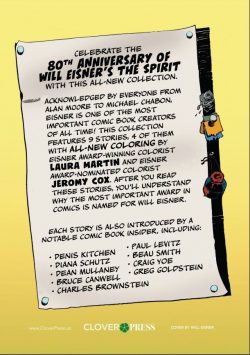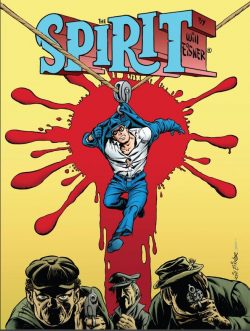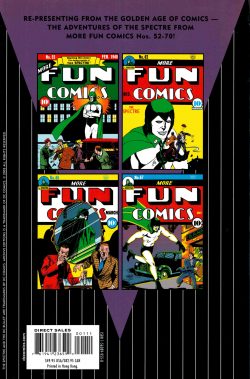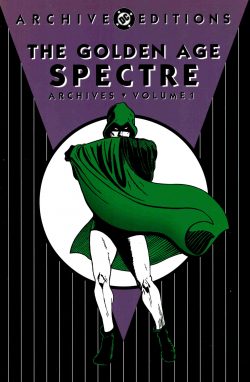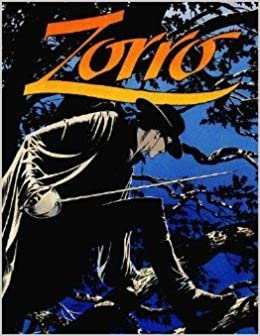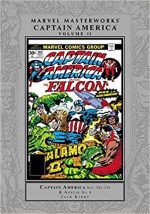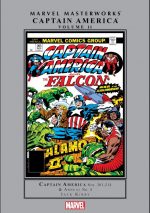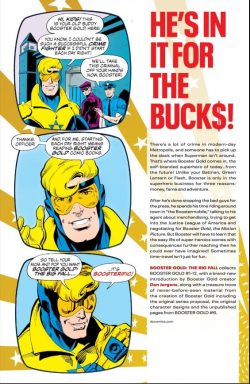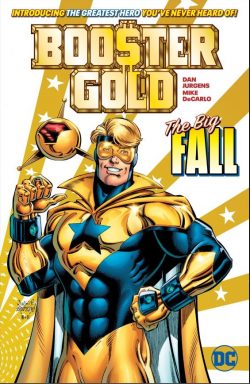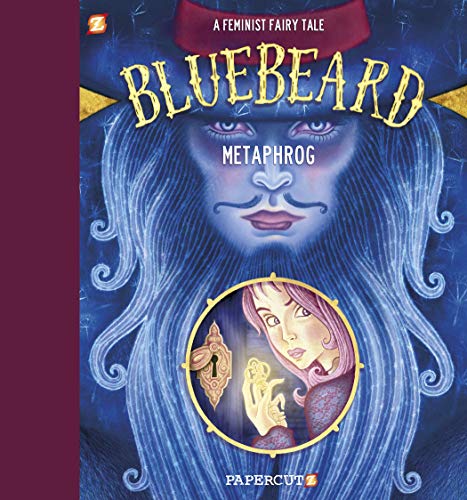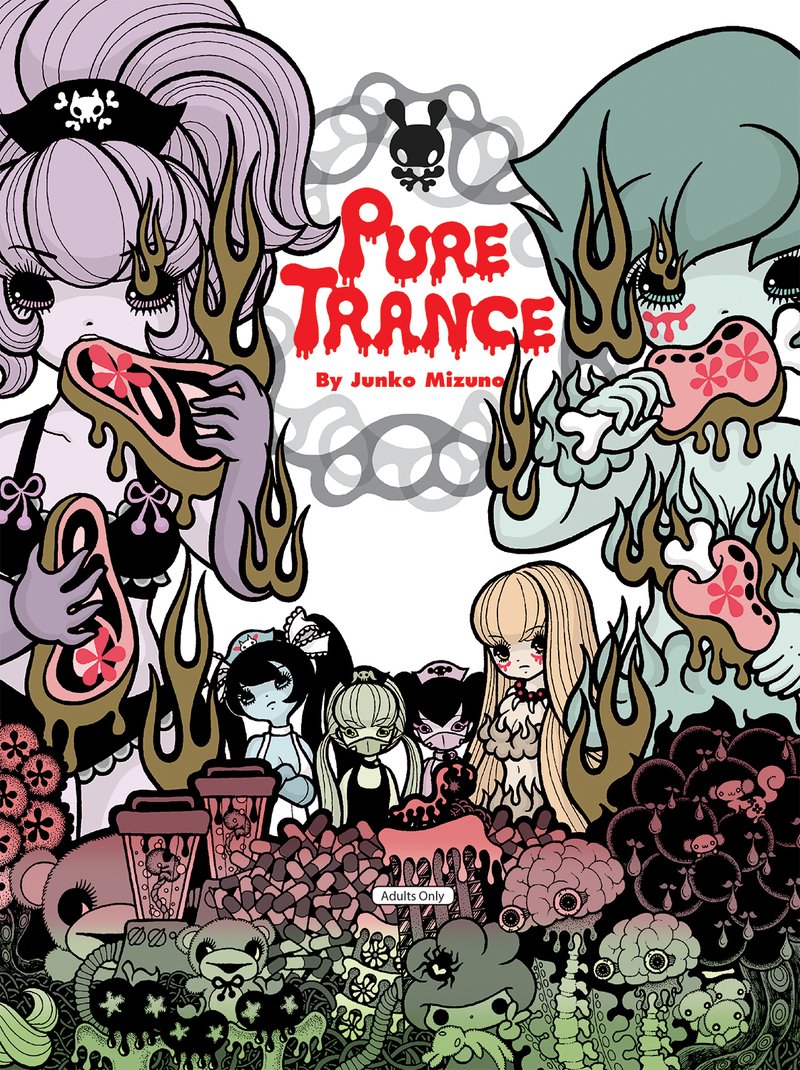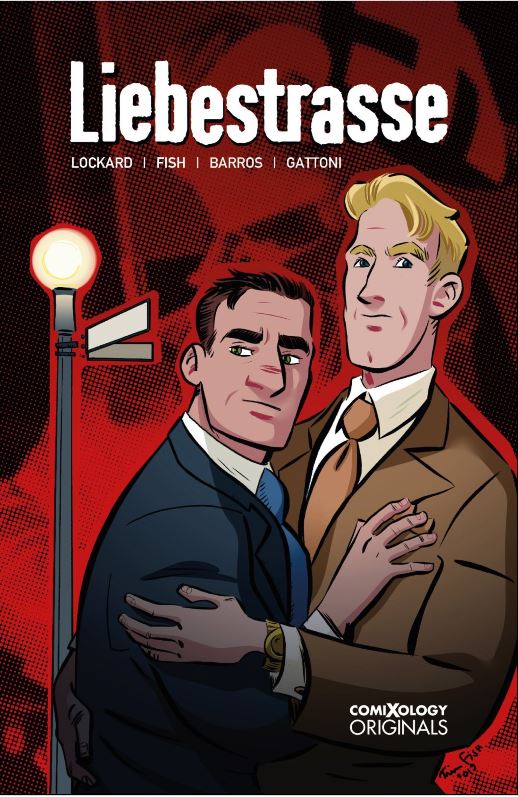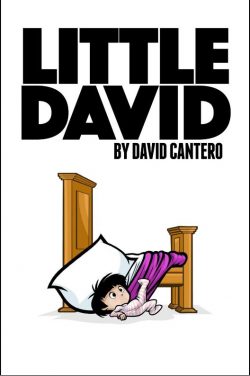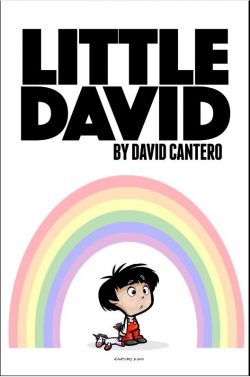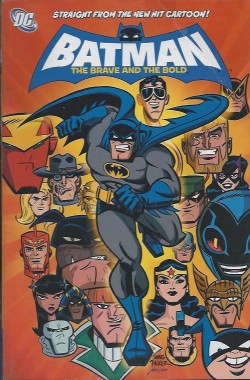
By Matt Wayne, J. Torres, Andy Suriano, Phil Moy, Carlo Barberi, Dan Davis & Terry Beatty (DC Comics)
ISBN: 978-1-4012-2650-3 (TPB)
The Brave and the Bold began in 1955 as an anthology adventure comic featuring short complete tales about a variety of period heroes: a format which mirrored that era’s filmic fascination with historical dramas. Devised and written by Bob Kanigher, issue #1 led with Roman epic Golden Gladiator, medieval mystery-man The Silent Knight and Joe Kubert’s now-legendary Viking Prince. Soon, the Gladiator was increasingly alternated with Robin Hood, but the manly adventure theme carried the title until the end of the decade when the burgeoning costumed character revival saw B&B transform into a try-out vehicle in the manner of Showcase.
Used to premiere concepts and characters such as Task Force X: The Suicide Squad, Cave Carson, Hawkman, Strange Sports Stories and the epochal Justice League of America, the comic soldiered on until issue #50 when it provided another innovative new direction which once again truly caught the public’s imagination.
That issue paired two superheroes – Green Arrow & Martian Manhunter – in a one-off team-up, as did succeeding ones: Aquaman with Hawkman in #51, WWII Battle Stars Sgt. Rock, Captain Cloud, Mme. Marie & the Haunted Tank in #52 and Atom & Flash in #53. The next team-up – Robin, Aqualad & Kid Flash, evolved after further try-outs into the Teen Titans and after, Metal Men/the Atom and Flash/Martian Manhunter appeared, brand new hero Metamorpho, the Element Man debuted in #57-58.
From then it was back to the extremely popular superhero pairings with #59, and although no gone realised it at the time, this particular conjunction – Batman with Green Lantern – would be particularly significant….
After a return engagement for the Teen Titans, two issues spotlighting Earth-2 champions Starman & Black Canary and Wonder Woman witth Supergirl, an indication of things to come materialised as Batman duelled hero/villain Eclipso in #64: an acknowledgement of the brewing TV-induced mania mere months away…
Within two issues, following Flash/Doom Patrol and Metamorpho/Metal Men, Brave and the Bold #67 saw the Caped Crusader take de facto control of the title and the lion’s share of the team-ups. With the exception of #72-73 Spectre</Flash and Aquaman/Atom) the comic was henceforth a place where Batman invited the rest of company’s heroic pantheon to come and play…
Decades later, the Batman Animated TV series masterminded by Bruce Timm and Paul Dini in the 1990s revolutionised the Dark Knight and subsequently led to some of the absolute best comicbook adventures in his decades-long publishing history with the creation of the spin-off print title.
With constant funny book iterations and tie-ins to a succession of TV cartoon series, Batman has remained popular and a sublime introducer of kids to the magical world of the printed page.
One relatively recent incarnation was Batman: the Brave and the Bold, which gloriously teamed up the all-ages small-screen Dark Knight with a torrent and profusion of DC’s other heroic creations, and once again the show was supplemented by a cool kid’s comic book full of fun, verve and swashbuckling dash, cunningly crafted to appeal as much to the parents and grandparents as those fresh-faced neophyte kids…
This stellar premier collection (available in paperback but aggravatingly not in digital editions) gathers the first 6 issues in a hip, trendy, immensely entertaining package suitable for newcomers, fans and aficionados of all ages and, although not necessary to the reader’s enjoyment, a passing familiarity with the TV episodes will enhance the overall experience (and they’re pretty good too)…
Following the format of the TV show, each tale opens with a brief vignette adventure before telling a longer tale. Issue #1 has the Caped Crimebuster and Aquaman putting paid to robotic rogue Carapax. This feeds into main feature ‘The Panic of the Composite Creature’ (by Matt Wayne, Andy Suriano & Dan Davis) wherein Batman and the pulchritudinous Power Girl save London from Lex Luthor‘s latest monster-making mechanism.
Phil Moy illustrates Superman and the Gotham Guardian mopping up the terrible Toyman before ‘The Attack of the Virtual Villains’ finds the Bat and Blue Beetle in El Paso battling evil Artificial Intellect The Thinker, in a compelling and extremely challenging computer-game world…
After an introductory battle between Wonder Woman , Dark Knight and telepathic tyrant Dr. Psycho‘s zombie villains, ‘President Batman!’ (Wayne, Suriano & Davis) sees the Great Detective substitute for the Commander-in-Chief, with Green Arrow as bodyguard when body-swapping mastermind Ultra-Humanite attempts to seize control of the nation.
Then, in full-length thriller ‘Menace of the Time Thief!’, Aquaman and his bat-eared chum prevent well-intentioned Dr. Cyber from catastrophically rewriting history, following a magical and too brief prologue wherein sorcerer Felix Faust is foiled by a baby Batman and the glorious pushy terrible toddlers Sugar and Spike…
Torres, Carlo Barberi & Terry Beatty stepped in for both the chilling vignette wherein the nefarious Key is caught by Batman and a Haunted Tank whilst ‘The Case of the Fractured Fairy Tale’ opens as the awesome Queen of Fables starts stealing children for her Enchanted Forest and the Caped Crusader needs the help of both Billy Batson and his Shazam!-shouting adult alter ego Captain Marvel…
This initial outing concludes with a preliminary clash between Hourman and Batman against the crafty Calculator, after which ‘Charge of the Army Eternal!’ (Torres, Suriano & Davis) finds villainous General Immortus at the mercy of his own army of time-lost warrior bandits and desperately seeking the help of the Gotham Gangbuster and ghostly Guardian Kid Eternity..
Although greatly outnumbered, the Kid’s ability to summon past heroes such as The Vigilante, Shining Knight, Viking Prince and G.I. Robot proves invaluable, especially once the General inevitably betrays his rescuers…
This fabulously fun rollercoaster ride also includes informative ‘Secret Bat Files’ on Luthor, Power Girl, Thinker, Blue Beetle, Ultra-Humanite, Green Arrow, Dr. Cyber, Aquaman, Queen of Fables, Captain Marvel, General Immortus and Kid Eternity, and the package is topped off with a spiffy cover gallery courtesy of James Tucker, Scott Jeralds & Hi-Fi.
The links between kids’ animated features and comicbooks are long established and, I suspect, for young consumers, indistinguishable. After all, it’s just adventure entertainment in the end…
Despite being ostensibly aimed at TV viewing kids, these short, sweet sagas are also wonderful, traditional comics thrillers no self-respecting fun-fan should miss: accessible, entertaining, well-rendered yarns for the broadest range of excitement-seeking readers, making this terrific tome a perfect, old fashioned delight. What more do you need to know?
© 2009 DC Comics. Compilation © 2008, 2009 DC Comics. All Rights Reserved.

